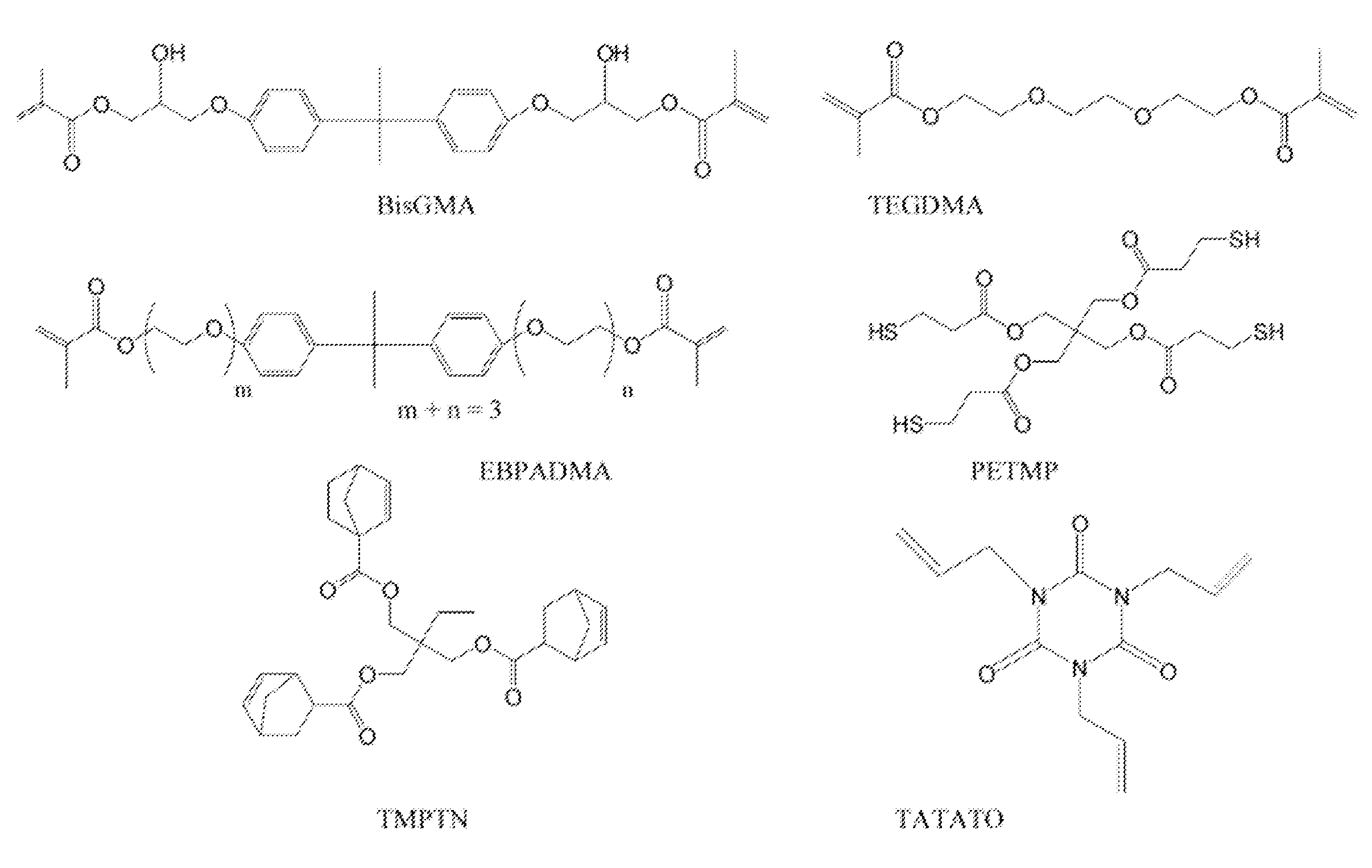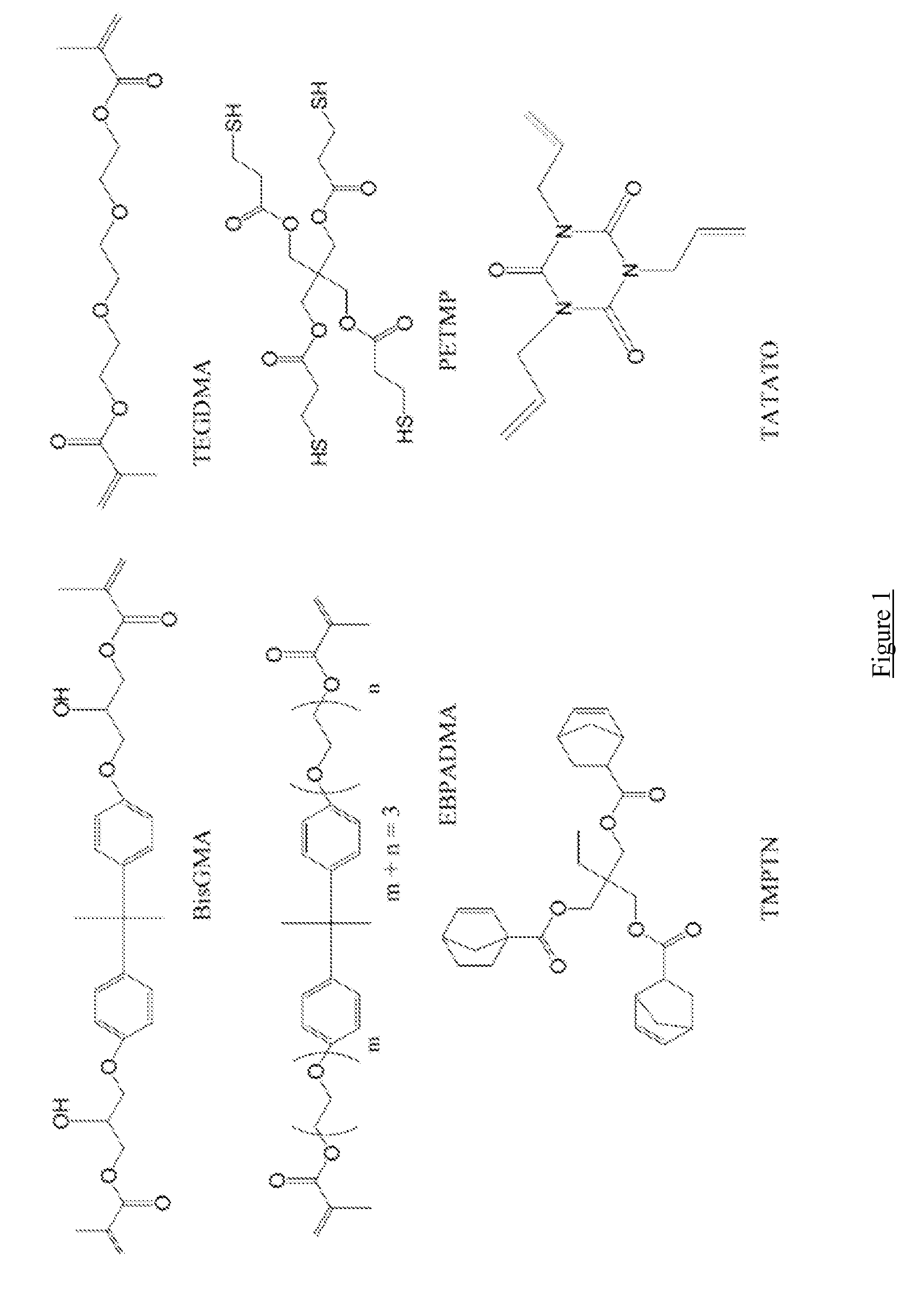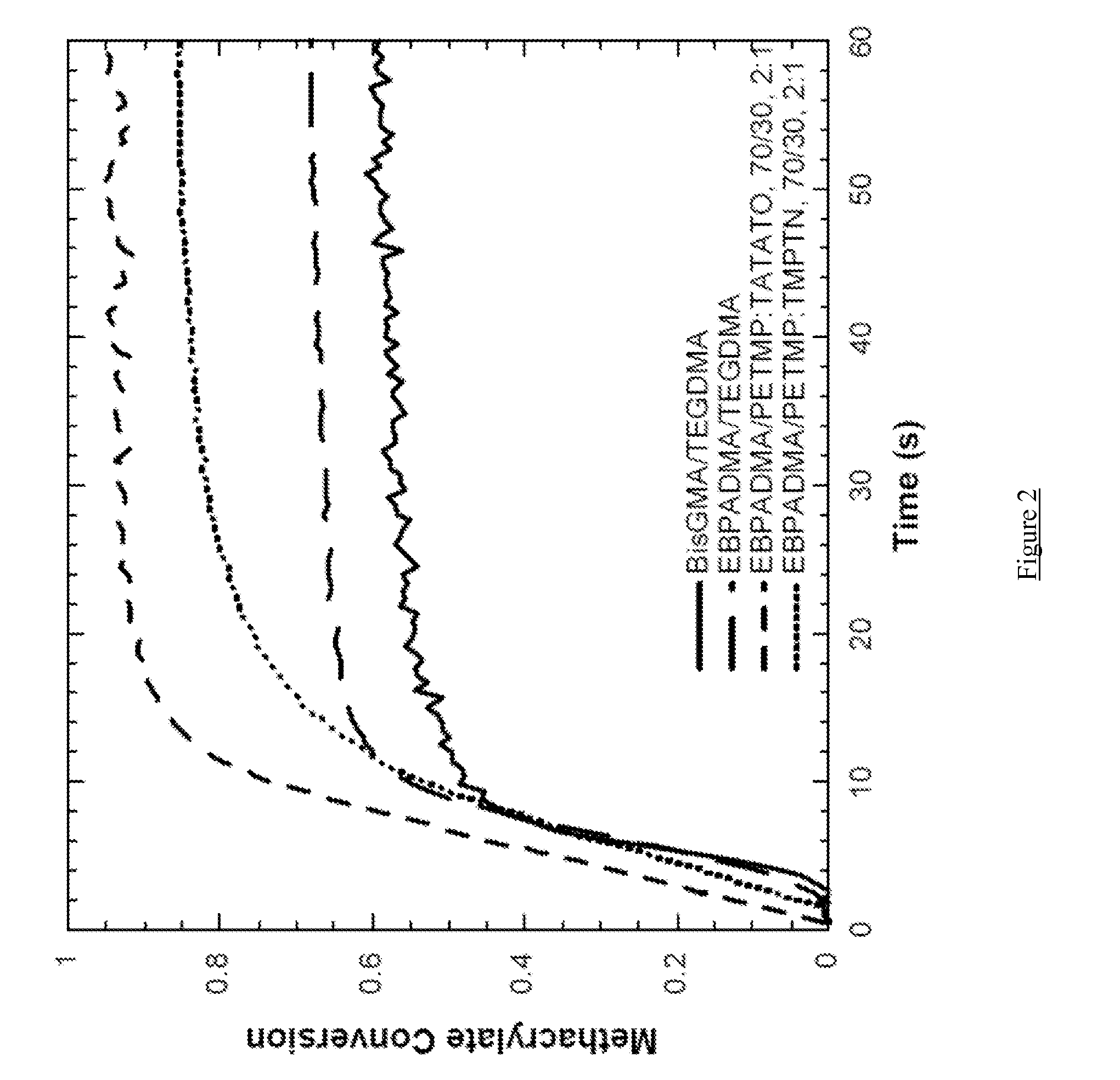Resin systems for dental restorative materials and methods using same
a technology of resin systems and restorative materials, applied in dentistry, prosthesis, medical preparations, etc., can solve the problems of long chain, insufficient wear resistance and mechanical properties, and jeopardizing the biocompatibility of composite materials
- Summary
- Abstract
- Description
- Claims
- Application Information
AI Technical Summary
Problems solved by technology
Method used
Image
Examples
example 1
Polymerization Kinetics & Conversion
[0097]Polymerization kinetics were monitored for various methacrylate-thiol-ene, methacrylate-thiol and dimethacrylate control resins under identical curing conditions. All samples contained 0.3 wt % Irgacure 819, 0.035 wt % Q1301, and were irradiated at 29 mW / cm2 with a 400-500 nm filter. Conversion of functional groups was monitored by FTIR.
[0098]Functional group conversion data over time in various systems are illustrated in FIGS. 2-4. Final conversion for each system is shown in Table 1. FIG. 2 shows methacrylate conversion monitored over time for four resin systems. Two methacrylate control systems BisGMA / TEGDMA and EBPADMA / TEGMA, both at a 70 / 30 wt ratio, were compared to two methacrylate-thiol-ene systems: EBPADMA / PETMP:TATATO at 70 wt % methacrylate / 30 wt % thiol-ene with a 2:1 stoichiometric ratio of thiol to ene functional groups and EBPADMA / PETMP:TMPTN at 70 / 30 wt ratio with a 2:1 stoichiometric ratio of thiol to ene functional groups. ...
example 2
Flexural Modulus and Strength
[0103]Methacrylate conversion and mechanical properties of cured resins were tested for methacrylate-thiol-ene, methacrylate-thiol resin systems and dimethacrylate control resins when subjected to identical curing conditions. Relative monomer amounts are shown in Table 2 for each sample. All samples contained 0.3 wt % Irgacure 819, 0.035 wt % Q1301, and were irradiated at 29 mW / cm2 with a 400-500 nm filter for 150 seconds.
[0104]Results for flexural modulus and strength for methacrylate, methacrylate-thiol, and methacrylate-thiol-ene systems are shown in Table 2. The EBPADMA / PETMP 80 / 20 system exhibited an equivalent flexural modulus to BisGMA / TEGDMA and a slightly increased flexural modulus relative to EBPADMA / TEGDMA. The flexural strength is slightly reduced relative to both control systems. Increasing the PETMP content to 25 percent resulted in a decrease in both flexural modulus and strength. The EBPADMA / PETMP:TATATO system with a 1:1 thiol:ene stoich...
example 3
Shrinkage Stress
[0108]Various resin system samples were subjected to identical curing conditions with a 400-500 nm filter and 29 mW / cm2 measured by radiometer through 6 mm glass rods. Shrinkage stress of cured resins was measured for methacrylate-thiol-ene, methacrylate / thiol and dimethacrylate control resins when subjected to identical curing conditions.
[0109]Results for shrinkage stress and methacrylate conversion are shown in Table 4. The irradiation intensity for shrinkage stress is measured through the tip of 6 mm glass rods. As such, the actual irradiation intensity is greater than the measured intensity and the samples achieve higher conversion than for flexural or kinetic measurements. The EBPADMA / PETMP systems both exhibited reduced shrinkage stress relative to the control resins with stress decreasing with increased thiol content. The EBPADMA / PETMP:TATATO 70 / 30 systems all exhibit reduced shrinkage stress as compared to the control resins. As the thiol to ene functional gr...
PUM
| Property | Measurement | Unit |
|---|---|---|
| size | aaaaa | aaaaa |
| light wavelength range | aaaaa | aaaaa |
| light wavelength range | aaaaa | aaaaa |
Abstract
Description
Claims
Application Information
 Login to view more
Login to view more - R&D Engineer
- R&D Manager
- IP Professional
- Industry Leading Data Capabilities
- Powerful AI technology
- Patent DNA Extraction
Browse by: Latest US Patents, China's latest patents, Technical Efficacy Thesaurus, Application Domain, Technology Topic.
© 2024 PatSnap. All rights reserved.Legal|Privacy policy|Modern Slavery Act Transparency Statement|Sitemap



